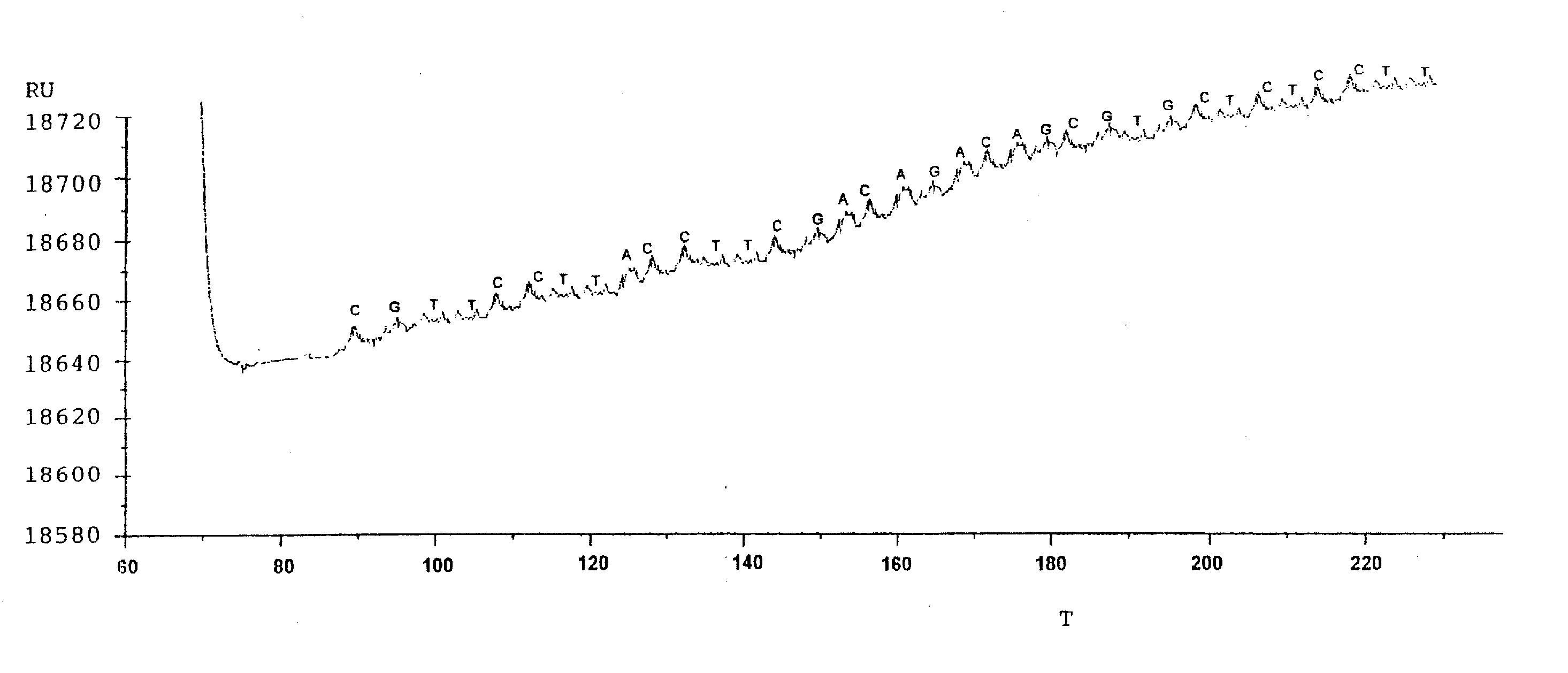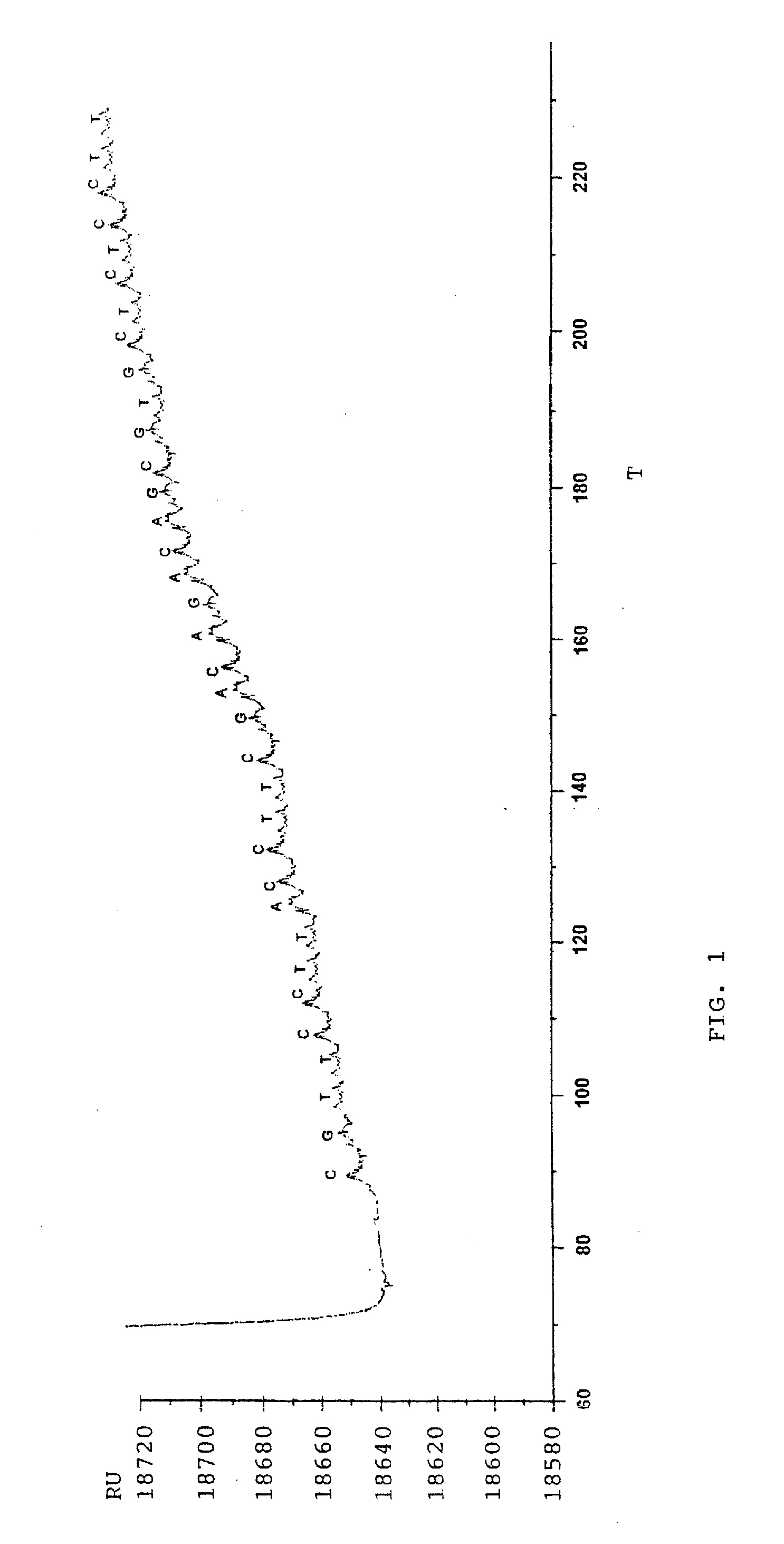Polynucleotide Sequencing Using a Helicase
- Summary
- Abstract
- Description
- Claims
- Application Information
AI Technical Summary
Benefits of technology
Problems solved by technology
Method used
Image
Examples
example
[0031] The following analysis was carried out on a modified BIAcore® 2000 system (BIAcore AB, Uppsala, Sweden) with a sensor chip CM5 (Research grade, BIAcore AB) as the optical sensor surface. The instrument was provided with an integrated m-fluidic cartridge (IFC) which allows analysis in four cells by a single sample-injection.
Preparation of PcrA Helicase
[0032] PcrA helicase was prepared according to Bird et al, Nucleic Acids Res. (1998) 26:2686-2693, using hydrophobic interaction chromatography on heparin-Sepharose, to purify the helicase at low salt concentrations. Trace protein contaminants were removed by gel filtration. PcrA concentration was determined spectrophotometrically using a calculated extinction coefficient of 0.76 OD mg−1 mL−1 1 cm−1 at 280 nm as described by Dillingham et al, Biochemistry (2000) 39:205-212.
Immobilisation of the Helicase
[0033] Immobilisation of the helicase to the sensor chip was carried out according to Jönsson et al., Biotechniques (1991);...
PUM
| Property | Measurement | Unit |
|---|---|---|
| pH | aaaaa | aaaaa |
| pH | aaaaa | aaaaa |
| pH | aaaaa | aaaaa |
Abstract
Description
Claims
Application Information
 Login to View More
Login to View More - R&D
- Intellectual Property
- Life Sciences
- Materials
- Tech Scout
- Unparalleled Data Quality
- Higher Quality Content
- 60% Fewer Hallucinations
Browse by: Latest US Patents, China's latest patents, Technical Efficacy Thesaurus, Application Domain, Technology Topic, Popular Technical Reports.
© 2025 PatSnap. All rights reserved.Legal|Privacy policy|Modern Slavery Act Transparency Statement|Sitemap|About US| Contact US: help@patsnap.com


